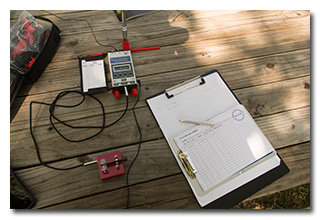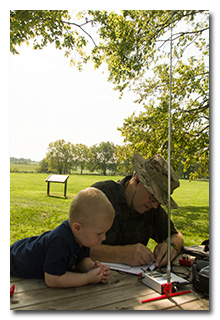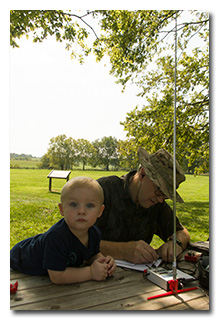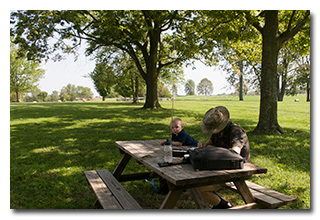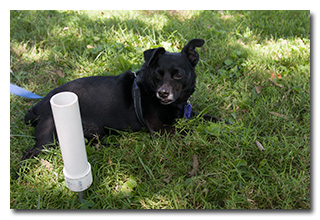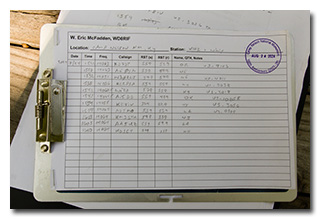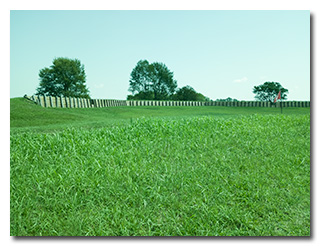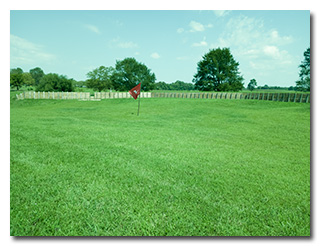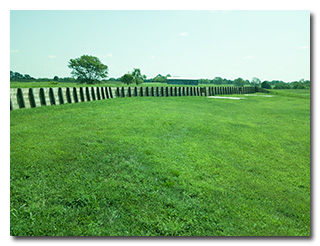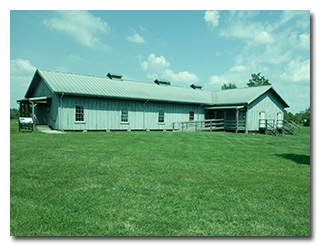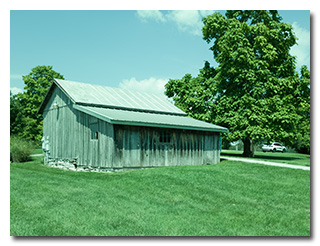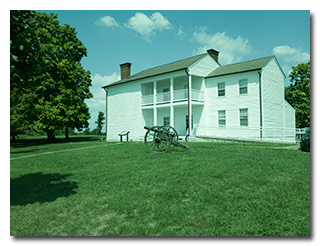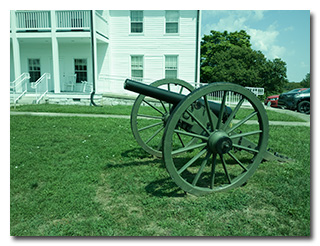
by William Eric McFadden
From the Camp Nelson National Monument website:
-
The US Army established Camp Nelson in Central Kentucky as a fortified supply depot, forward operating base, and hospital in April 1863 during the American Civil War. Camp Nelson also served as a recruiting post for White soldiers and a refugee camp for White Unionists fleeing Confederate occupation in East Tennessee and the surrounding region. Camp Nelson was instrumental in the US war effort to liberate East Tennessee from Confederate control.
Camp Nelson’s importance exceeded its initial purpose. Beginning in 1864, thousands of Black men, women and children escaped slavery and journeyed to Camp Nelson. Some took up arms, gained their legal emancipation, and became United States Colored Troops (USCTs). Women, children, and elderly men lived as refugees at Camp Nelson, uncertain of their freedom and their futures. In the aftermath of war, when African American veterans and families began shaping their lives as acknowledged citizens of the United States, many stayed at Camp Nelson, and established the new community of Ariel.
Camp Nelson represents the courage and determination of formerly enslaved African Americans to secure their own emancipation and control their futures by contributing to the destruction of slavery. It also illustrates the nation’s struggle to define the meaning of freedom during and after the Civil War.
Pictures
- Eric's KH1 station
- Eric operates while grandson Archer watches: 1 | 2 | 3; photos by Vickie McFadden
- Theo-dog
- Eric's logsheet
- (Reconstructed) Fort Putnam: 1 | 2 | 3
- The (reconstructed) barracks
- The shed adjacent to Oliver Perry White House
- Oliver Perry White House
- The cannon in front of White House
Description
On Saturday, August 24, 2024, one member of the Southeast Ohio Radio Adventure Team performed a successful activation of Camp Nelson National Monument in Kentucky as part of the Parks on the Air (POTA; link) program.
Prior to returning home from Nicholasville, Kentucky, after having attended a memorial service, Eric McFadden, WD8RIF, drove a short distance south to visit Camp Nelson National Monument and to perform a POTA activation. Eric was accompanied by his wife Vickie, his two-year-old grandson Archer, Theo-dog, and Ginny-dog.
Eric, Vickie, Archer, and the dogs arrived at Camp Nelson at about 1445 UTC. Eric and Vickie took turns exploring the Visitor Center since the dogs were not allowed inside, and they decided they would delay further exploration of the park until after Eric had completed his activation. Eric studied the park map and decided he would perform his activation on one of the two picnic tables located near the Visitor Center and, afterwards, the trio plus the dogs would the walk the short trail to the reconstructed Fort Putnam, to Graveyard No. 1 and the monument therein, and to the reconstructed barracks near the Visitor Center. Eric's plan didn't quite work out that way, though.
Eric chose to use his Elecraft KH1 for this activation, and he carried his KH1 Micro Travel Kit, a Whiterook MK-33 paddle, a Goture Red Fox Super Hard 720 carbon-fiber mast, a spike, and a water-bottle in one trip over the 100-yard distance between his car and the picnic tables, with the gear packed in a way which would allow him to easily carry it on a subsequent hike after his activation was complete.
Even though Eric had discussed his plans to perform an Amateur Radio operation with a park ranger, he still wanted to maintain a low profile during his operation. After selecting one of the two available picnic tables, Eric deployed his KH1 on the picnic table in "picnic table mode" using the stock 4' telescoping whip antenna, a Tufteln KH1 Right Angle Adapter with Stand (link), and the stock 13' counterpoise wire placed directly on the ground. With Eric was on air about 1515 UTC.
Eric was pleased to find he had good cell-signal within the park and would be able to spot himself on POTA Spots (link) and to use POTA Spots to hunt for park-to-park (P2P) QSO opportunities. Using the available cell-signal, he checked the the solar indices (SFI=242, SN=174, A-Index=7, and K-Index=3) and didn't think they looked terrible.
Eric found a clear frequency on 20m to run, began calling "CQ POTA", and was happy to be auto-spotted on POTA Spots. His first QSO was a P2P QSO which came at 1522 UTC with KJ7DT who was on Oregon National Historic Trail (US-4576) within Farewell Bend State Recreation Area (US-9147) in Oregon. Eric's second QSO came at 1528 UTC with AE0YM in Nebraska. After this, Eric's repeated calls of "CQ POTA" produced no answers.
Pausing to hunt for P2P QSOs, at 1532 UTC Eric completed a P2P QSO on 20m with WB0RLJ at Chalco Hills State Recreation Area (US-4011) in Nebraska. (At the time this report was published, WB0RLJ was the park leader at Chalco Hills SRA with 664 activations; the second-place activator is way behind, with only 42 activations of the park.) This was followed at 1538 UTC by a P2P QSO on 20m with KC2PSA at Cold Spring Harbor State Park (US-2038) in New York, and at 1541 UTC by a P2P QSO on 20m with WI2X at Brentwood State Park (US-2018) in New York.
Returning to an attempt to run a frequency on 20m, Eric was able to complete a P2P QSO at 1545 UTC with AI5DD who was activating Lake Carl Blackwell Wildlife Management Area (US-10658) in Oklahoma. Subsequent calls of "CQ POTA" again went unanswered.
Pausing again to hunt for P2P QSOs, at 1554 UTC Eric completed a P2P QSO on 20m with KF8IV at Sheldon Lake State Park (US-3056) in Texas. This was followed at 1559 UTC by a P2P QSO on 20m with AD5MO at Grand Cote National Wildlife Refuge (US-0309) in Louisiana.
Returning once more to attempt to run a frequency on 20, Eric was able to complete three more QSOs. At 1603 UTC, he completed a QSO with KM3STU in New Jersey. At 1605 UTC, he completed a QSO with reliable hunter AA5UZ in Louisiana. Finally, at 1610 UTC he completed a QSO with KD1CT in New Hampshire.
Having already spent about twice as long as he had anticipated spending on his activation, and hoping to have even a little bit of time to explore Camp Nelson, Eric ended his activation with twelve QSOs logged (counting the QSO with KJ7DT as two because of the two-fer) and eight P2P QSOs. All of Eric's QSOs were made with CW at a power-output of 5w.
Eric found it strange that his attempts at running a frequency produced so few results given that he was able make P2P QSOs as a hunter with nearly every activator he could hear. His only guess is that, with the 4' telescoping whip, his QRP signal was weak enough that people hearing him didn't attempt to call him because they figured their signal would be as weak at Eric's receiver, not knowing that Eric was running only 5w into a severely compromised antenna. Was this the issue? Perhaps. Perhaps not.
By the time Eric's activation was completed, Vickie had had enough sun that she wasn't up to walking even the half-mile hiking trail to Fort Putnam and back. Wanting to see at least the reconstructed Fort Putnam, Eric took his two-year-old grandson Archer and walked the short trail to fort and then looked at some of the other buildings near the Visitor Center.
Eric and Vickie both would have like to explore more of the park, but with over four hours of driving ahead of them before they would reach home, they decided further exploration would need to wait for a return visit.
Eric also submitted his log to the World Wide Flora and Fauna in Amateur Radio (WWFF; link) program.
(return)
